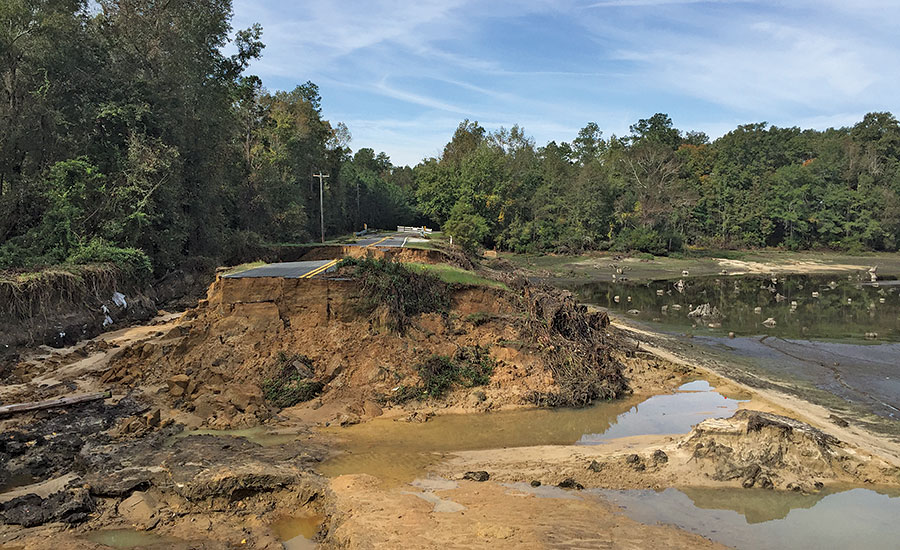South Carolina is taking steps to improve the safety of its regulated dams following the failure of more than 30 structures during October’s massive floods. The action is aimed at addressing lingering concerns about the effectiveness of the state’s safety program.
The result of a 1,000-year storm event that dumped as much as two feet of rain on inland and coastal areas in just over three days, the floods caused failures in 36 dams, of which 31 are regulated by the South Carolina Dept. of Health and Environmental Control (DHEC). Only one federally regulated dam—an earthen structure located on a U.S. Army installation in Columbia, the state capital—was breached.
Following a joint DHEC-Corps of Engineers post-flood assessment of 652 state-regulated dams classified as posing a serious threat to life and infrastructure in the event of a failure, the state ordered owners of 75 structures to perform inspections and, by the end of October, submit plans for emergency repair or replacement. Inspectors evaluated the dams for evidence of overtopping, debris, structural damage, erosion, flow, seepage, potential weak or failure points, and overgrowth. Failure to take action would subject dam owners to an initial fine of $1,000 and additional daily penalties of as much as $500.
The owners of another 167 damaged dams deemed at lower risk of failure have until Feb. 2, 2016, to inspect their structures and identify any needed repairs or maintenance.
In her press briefings during the flood response-and-recovery effort, reporters frequently asked Gov. Nikki Haley (R) whether South Carolina could have better managed the safety of its dams. According to the Association of State Dam Safety Officials, DHEC received $260,000 in 2014—the fourth-lowest amount in the nation—to oversee 2,370 dams. Most of these structures are small, privately owned earthen barriers that have a minimum height of 25 ft or impound at least 50 acre-ft of water.
Smaller dams posing a threat to public safety in the event of a failure may also come under DHEC regulations.
However, emergency management officials estimate there may be as many as 20,000 other dams in the state not subject to any regulatory oversight.
Gov. Haley and DHEC officials currently are considering potential changes to South Carolina’s dam safety program, which will be brought before the state Legislature when it convenes in January. DHEC has retained HDR Engineering to assist in reviewing the program and perform an engineering review and assessment of the 47,000-acre Gills Creek Watershed, near Columbia. The heavily developed watershed contains more than 100 impoundments within its more than 70 miles of streams and lakes.
Rick Miller, senior vice president for hydropower at HDR, says the firm’s hydraulic modeling of the watershed will be used to develop a coordinated management plan for the lakes and ponds.
“We’ll also help DHEC understand why some dams in the watershed failed during the flood, while others showed resiliency from a hydraulic perspective,” Miller says.



